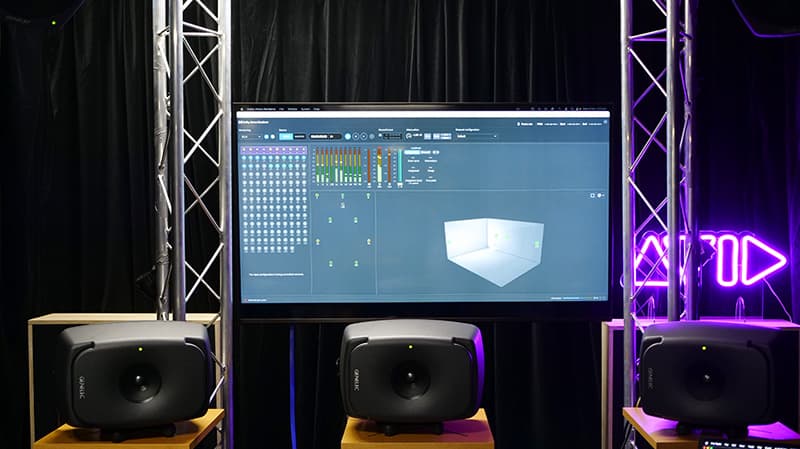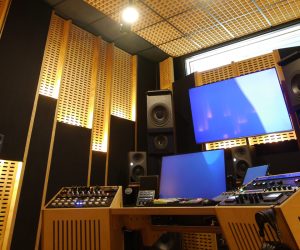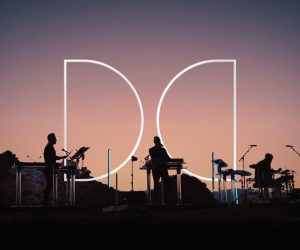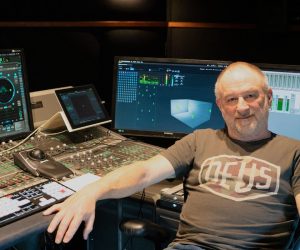
Atmos: No Fear
Avid and Innovative Music have set up a Dolby Atmos Music studio in their Melbourne office. Drop by.
The Atmos ‘stars’ are aligning and its time has come. Of course, there’s nothing new about Atmos, per se. It’s been around since 2012 but in the world of music production, stereo has ruled supreme.
Then Apple.
Earlier in 2022, Apple Music announced it was throwing its weight behind Atmos and it sent the music industry into a spin. Since then, music producers and music studios have been frantically looking at how to tool up for Atmos Music.
Avid in Australia has set up an immersive space in the offices of its Australian distributor, Innovative Music. It’s hardly Blackbird or Soundfirm but it does demonstrate that getting into Atmos need not cost the earth. In fact, it’s entirely achievable.
The space is based around an Avid S6 surface, a Mac with an HDX card running Pro Tools Ultimate and an Avid MTRX unit taking care of routing and monitor control. Ingeniously, the Genelec surround monitors are mounted on two arches of truss.
In a classic case of ‘build it and they will come’ the space is playing host to audio professionals, equipment resellers, audio school staffers and more, allowing them to get their heads around the brave new world of immersive audio.
AT spoke with Avid Audio Applications Specialist, Drew Parsons, about the space and the investment.
AT: What’s the bare minimum investment I need to start mixing in Dolby Atmos Music?
Drew Parsons: You can start with a two-channel audio interface, some headphones, the Dolby Atmos software (in headphone-only mode) and a DAW like Pro Tools Studio. So the only extra investment might be the $200 Dolby software.
AT: Right, so that’s what’s called binaural mixing?
Drew Parsons: Yes, the Dolby Atmos software renders a two-channel ‘binaural’ version of your multi-channel Atmos mix. You can use that to monitor with if you’re not ready to invest in multiple studio monitors.
AT: What if I am? What do I need?
Drew Parsons: You need a DAW and an audio interface with sufficient outputs. The Avid MTRX (and MTRX Studio) is proving popular because not only is it an audio interface, it’s also a monitor controller — it can take care of the EQ and phase alignment of a surround sound monitoring setup. There are other systems, such as Trinnov, which do a fine job of monitor control if you want to keep your current audio interface.
Then there’s the studio monitors: 7.1.4 is a good number — three speakers at the front, two at the rear, two on the sides and four overhead. 9.1.6 is more like the gold standard. In our case, we’re using Genelec One monitors and a sub at the front and smaller Genelec monitors for surrounds. It’s important to choose speakers with matched tonal characteristics.


AT: Does the Dolby software run on your DAW computer or on its own?
Drew Parsons: Either. You can have a standalone workstation that is only running the Dolby software and maybe something like a Focusrite RedNet PCIe card that’ll give you lots of Dante inputs into that dedicated workstation. Or you can have the Dolby software running on the same computer as your workstation and use software patching between Pro Tools and the Dolby software, and then from the output of the Dolby software to your interface for monitoring.
AT: How do you record and/or deliver an Atmos project?
Drew Parsons: You do that in the Dolby software. You would create a new master file and then you would record the master file into the Dolby software in real time. When complete, you can export your .ADM file.
I’ve just started working with a new feature in Pro Tools called Aux I/O, which allows me to add additional routing options of Core Audio devices into my I/O setup other than just my HDX system. HDX is still my playback engine, but I’m routing 128 channels out of Pro Tools into the Dolby software, and then I’m returning my surround sound re-render and my stereo re-render back onto audio tracks in Pro Tools. And while I’m recording my .ADM file, I’m also recording my other deliverables, all in one hit.
Also, using Aux I/O and the Pro Tools Audio Bridge, I’ve created a stereo output from Pro Tools which I’ve called a ‘Zoom out’, so I can actually send a binaural output to a Zoom call, and my client can hear my Atmos mix over VC.
AT: Any other hoops I need to jump through? Do I need a Dolby guy to drop by with a clipboard?
Drew Parsons: You don’t need Dolby certification. If you’re a commercial studio, of course, certification will be handy; necessary, even. But if you’re independent, then there’s more than enough info and guidelines on the web to ensure you’re set up correctly.
AT: Is the interest in getting ready for Dolby Atmos simply early adopters doing their early adoption thing?
Drew Parsons: Sure, you have early adopters but some of it is demand. There’s money to be made. Record companies are asking for it. Apple is demanding it, and all the signs suggest that Spotify is headed that way as well.
















RESPONSES